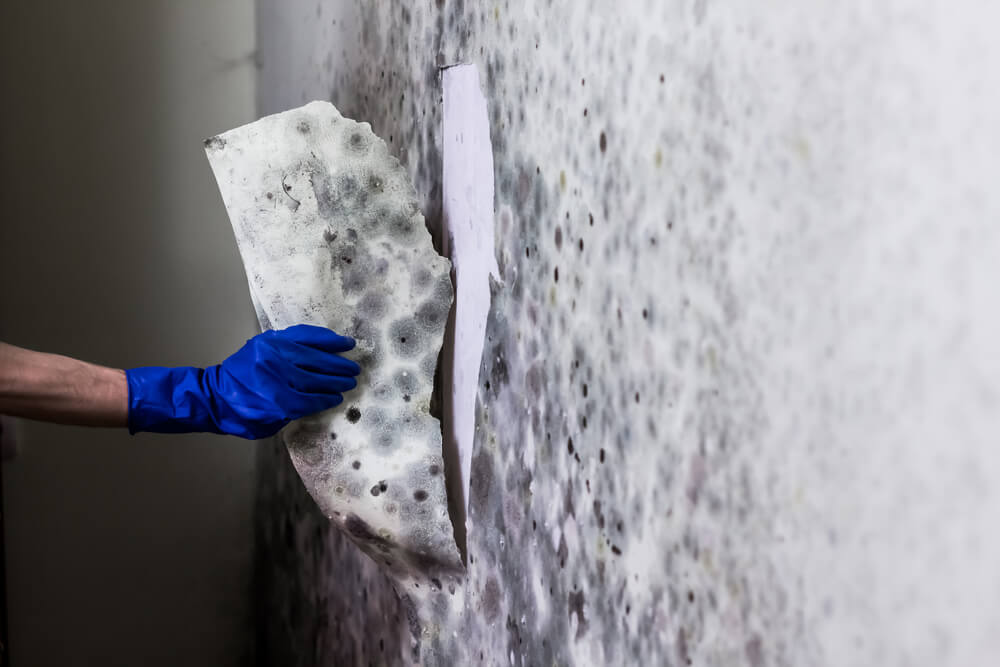Advice on What to Do After Mold Remediation
Advice on What to Do After Mold Remediation
Blog Article
Effective Article Mold Removal Solutions for Your Home
Mold and mildew growth in homes can be a persistent issue, usually requiring a systematic technique for efficient post-remediation solutions. From recognizing the variables that add to mold growth to executing proper cleansing strategies and wetness control steps, the procedure can be detailed yet vital for maintaining a healthy and balanced living environment. Additionally, discovering natural remediation solutions and developing a routine for ongoing maintenance are necessary components of a thorough mold remediation method. As house owners make every effort to attend to mold and mildew issues, discovering the most efficient options becomes paramount for the well-being of their houses.
Recognizing Mold Growth Aspects
The key element adding to mold growth is moisture. Mold and mildew spores call for wetness to flourish and germinate, making humid or damp settings extremely prone to mold and mildew invasions.

In addition, air movement and light exposure can affect mold and mildew growth. Locations that lack appropriate ventilation and all-natural light are much more vulnerable to mold growth. By attending to these factors thoroughly, individuals can successfully mitigate mold and mildew development and protect their living settings.
Proper Mold And Mildew Cleaning Methods
Making use of reliable cleansing approaches is important in attending to and stopping the reoccurrence of mold and mildew contamination in interior atmospheres. The initial step in proper mold and mildew cleansing is to have the afflicted area to stop the spread of spores to unpolluted areas.

Applying Wetness Control Measures
To successfully avoid mold and mildew growth and contamination in interior settings, executing wetness control procedures is critical. Additionally, making certain appropriate air flow in areas vulnerable to moisture build-up, such as washrooms and kitchens, can aid decrease the threat of mold development. By vigilantly applying these wetness control actions, home owners can properly reduce the probability of mold recontamination and preserve a healthy and balanced indoor atmosphere.
Using All-natural Remediation Solutions
After effectively executing moisture control actions to protect against mold and mildew growth in indoor environments, homeowners can currently check out the effectiveness of all-natural removal solutions in preserving a healthy living space. All-natural removal solutions make use of environmentally friendly approaches to fight mold and mildew and mold, making them a prominent choice for those seeking safe alternatives. By including click over here now these natural removal options into their cleansing regimens, house owners can efficiently battle mold development while promoting a healthier interior atmosphere for themselves and their family members.

Maintaining a Mold-Free Environment
Consistently evaluating locations susceptible to mold growth, such as shower rooms, cooking areas, cellars, and attics, is essential. Proper air flow in areas with high humidity degrees is additionally vital to stopping mold development.
Additionally, preserving sanitation in the home is crucial for mold prevention. Maintaining indoor plants in check and making sure correct drain in outdoor landscaping can reduce moisture build-up, reducing the possibility of mold and mildew infestations.
Verdict
In conclusion, it is essential to attend to mold growth factors, make use of proper cleaning techniques, execute moisture control steps, use natural removal options, and maintain a mold-free environment in order to successfully take care of post mold remediation in your home - testing air quality after mold remediation. By complying with these strategies, you can protect against mold from recurring and ensure a healthy and balanced living setting for you and your family members
The main element contributing to mold and mildew development is moisture. Mold spores call for wetness to germinate and flourish, making damp or humid atmospheres extremely at risk to mold and mildew infestations.To successfully prevent mold and mildew growth and contamination in interior settings, carrying out dampness control this hyperlink measures is critical. Additionally, making sure correct air flow in locations susceptible to moisture build-up, such as washrooms and kitchen areas, can aid reduce the danger of mold development.After efficiently applying dampness control measures to protect against mold and mildew growth in interior environments, home owners can currently check out the performance of natural remediation solutions in maintaining a healthy living area.
Report this page